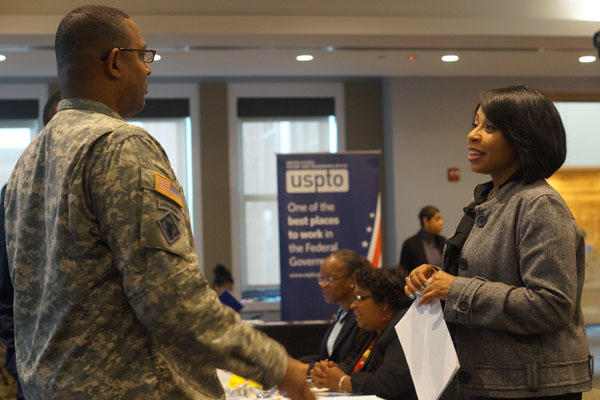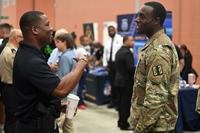The nonprofit RAND Corporation recently released the results of a 15-year study it conducted that looked at Iraq and Afghanistan veterans. The study covers multiple areas and is summarized in the article titled "10 Things We Know for Sure About Modern Veterans." One specific part of the study that will be examined here focuses on military transition, and veteran unemployment.
The study asked three main questions regarding veteran unemployment:
1. How Widespread Is Veteran Unemployment?
According to the study, veterans ages 18-24, and who have recently separated, have struggled to find jobs, compared to the same demographic in the civilian population. However, other post-9/11 veterans do not have a much higher unemployment rate than their civilian counterparts. The study references data from the Bureau of Labor Statistics (BLS), which showed the jobless rate being quite high in 2003-2005 and peaking at 29% in 2011 for veterans ages 18-24.
RAND points out that the media tend to report on unemployment numbers based on BLS data, which tends to capture short-run fluctuations and produce less reliable estimates of the veteran subpopulation. BLS data only includes a few hundred recently separated veterans, and to get a better reference, RAND looked at the U.S. Census Bureau's American Community Survey, where the sample size is in the thousands.
Utilizing these numbers, the RAND study shows that post-9/11 veteran unemployment is not so different when compared to demographically similar non-veterans, and post-9/11 veterans are more likely to be employed full time rather than part time, compared to their counterparts.
2. Why Are So Many Veterans on Unemployment?
The above findings don't negate the fact that recently separated veterans ages 18-24 may face additional hurdles in the labor market when compared with their civilian peers. Such hurdles include employer discrimination, mismatched skills, injuries and poor health.
However, the RAND study found that the majority of veterans receiving unemployment benefits were reservists returning from mobilization in Iraq and Afghanistan. RAND concluded that the above hurdles did not hold much of the blame. Instead, unemployment often resulted from these veterans not wanting to return to their own jobs (though PTSD was sometimes listed as a reason). It's also worth noting that whatever unemployment gap exists tends to lessen with age and time since separation from the military.
3. Are Tax Credits for Hiring Veterans Useful and Cost Effective?
The RAND study found that tax credits are powerful and cost effective when it comes to stimulating veteran hiring. Looking at the 2007 tax credit expansion, 32,000 disabled veterans found employment in 2007 and 2008 with the help of the credit, and their aggregate earnings increased by 40%.
Looking at the numbers alone, these credits cost $610 million or less over 2007 and 2008, but increased veterans' yearly income by more than $1 billion. The RAND study further found that the employment gap between disabled and non-disabled veterans widened as disabled veterans saw employment fall less sharply following the effects of the recession, likely due to the 2007 tax credits expansion targeting disabled veterans.
4. How Effective Are Support Services for Veteran Transition?
While the tax credits seem to have had a positive effect on veterans, programs designed to improve veterans' transition and employment opportunities showed mixed results. The 100,000 Jobs Mission has exceeded expectations by already hiring more than 265,000 veterans (the initial goal was 100,000 by 2020). However, the study found no positive impact on employment outcomes from the Army Partnership for Youth Success (PaYS), while most Beyond the Yellow Ribbon programs found partial success in meeting their goals, but struggled in areas such as "uncertain" and "limited" funding.
It seems that, according to the RAND study, veterans aren't having such a hard time finding employment as some sources would have us believe. Yes, hurdles must be overcome, but sites like Military.com, with its military skills translator, and tax programs, such as those mentioned above, are helping veterans quickly close any unemployment gaps between them and their civilian counterparts. This doesn't mean veterans have no hurdles to overcome; this is a fact that veteran transition programs should continue to work hard to address.
The Next Step: Find the Right Job
Whether you want to polish up your resume, find veteran job fairs in your area, or connect with employers looking to hire veterans, Military.com can help. Sign up for a free Military.com membership to have job postings, guides and advice, and more delivered directly to your inbox.











